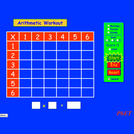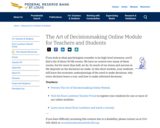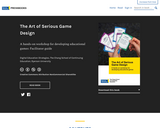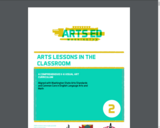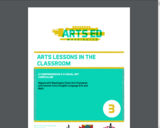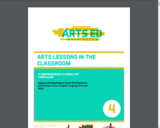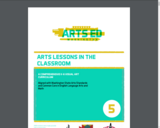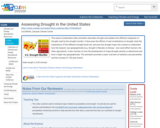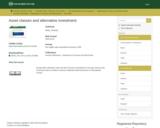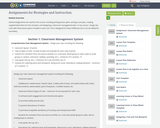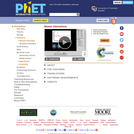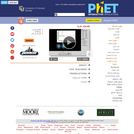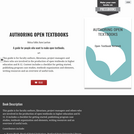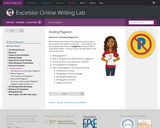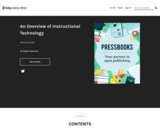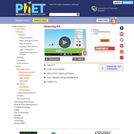Short Description:
This guide is for faculty authors, librarians, project managers and others who are involved in the production of open textbooks in higher education and K-12. Content includes a checklist for getting started, publishing program case studies, textbook organization and elements, writing resources and an overview of useful tools.
Long Description:
This guide is for faculty authors, librarians, project managers and others who are involved in the production of open textbooks in higher education and K-12. It includes a checklist for getting started, publishing program case studies, textbook organization and elements, writing resources and an overview of useful tools.
Contributors include: Karen Bjork, Head of Digital Initiatives, Portland State University Library. Caitie Finlayson, Assistant Professor, Department of Geography, University of Mary Washington. Dianna Fisher, Director of Open Oregon State. Linda Frederiksen, Head of Access Services, Washington State University, Vancouver. Ralph Morelli, Professor, Computer Science, Emeritus, Trinity College. Shane Nackerud, Technology Lead, Library Initiatives, University of Minnesota Libraries. Deb Quentel, Director of Curriculum Development & Associate Counsel, Center for Computer-Assisted Legal Instruction (CALI). Cody Taylor, Emerging Technologies Librarian, University of Oklahoma Libraries. Anita R. Walz, Open Education, Copyright & Scholarly Communications Librarian, Virginia Tech.
The authors invite the open textbook community to contribute their experience and knowledge for future editions of this guide. If you would like to offer additional case studies, frameworks and examples, please email open@umn.edu. Together we can create a flexible resource to support open textbook creation in a variety of contexts.
Word Count: 15985
(Note: This resource's metadata has been created automatically by reformatting and/or combining the information that the author initially provided as part of a bulk import process.)



